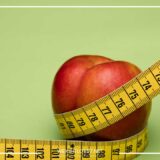Weight Loss for Men: Effective Strategies

Weight Loss for Men
Weight Loss for Men: Men’s Guide to Weight Loss
Losing weight can be a complex and challenging journey for many men, but with the right approach and determination, it’s entirely achievable.
This comprehensive guide delves into various strategies to help you shed those extra pounds, improve your health, and achieve lasting weight loss success.
We’ll cover dietary changes, exercise routines, lifestyle adjustments, meal planning, and tracking progress in detail to equip you with a holistic approach to weight management.
Understanding Weight Loss
Before diving into specific strategies, it’s essential to understand the fundamental principles of weight loss. Weight gain typically occurs when you consume more calories than you expend through physical activity and metabolism.
Conversely, weight loss happens when you create a calorie deficit—burning more calories than you consume.
Here’s a deeper look into the key factors affecting weight loss:
- Caloric Balance: The principle of caloric balance is central to weight management. To lose weight, you need to achieve a negative caloric balance, which means burning more calories than you consume. This can be achieved through a combination of reducing calorie intake and increasing physical activity.
- Metabolism: Metabolism is the process by which your body converts food into energy. A higher metabolic rate means you burn more calories at rest. Factors influencing metabolism include age, muscle mass, genetics, and physical activity levels. Strength training can help boost your metabolic rate by increasing muscle mass.
- Body Composition: Weight loss isn’t solely about the number on the scale; it’s also about body composition. Losing fat while preserving or increasing muscle mass is crucial for overall health. Muscle tissue burns more calories than fat tissue, which can aid in weight maintenance.
Effective Strategies for Weight Loss
To achieve sustainable weight loss, consider incorporating the following strategies into your routine:
1. Dietary Changes
- Prioritize Protein: Protein is a crucial macronutrient for muscle growth, repair, and overall metabolic function. Including sufficient protein in your diet can help you feel full longer and reduce overall calorie intake. Aim to incorporate high-quality protein sources such as:
- Lean Meats: Chicken, turkey, lean cuts of beef, and pork.
- Fish: Salmon, tuna, and other fatty fish rich in omega-3 fatty acids.
- Eggs: Versatile and nutrient-dense, eggs provide high-quality protein.
- Legumes: Beans, lentils, and chickpeas are excellent plant-based protein sources.
- Reduce Processed Foods: Processed foods often contain high levels of unhealthy fats, added sugars, and sodium, which can contribute to weight gain and health issues. Focus on whole, unprocessed foods such as:
- Fruits and Vegetables: Rich in vitamins, minerals, and fiber, they help regulate appetite and provide essential nutrients.
- Whole Grains: Foods like brown rice, quinoa, and whole-wheat products offer sustained energy and fiber.
- Nuts and Seeds: Almonds, chia seeds, and flaxseeds provide healthy fats and protein.
- Limit Sugary Drinks: Sugary beverages are a significant source of empty calories that can lead to weight gain. Replace them with healthier options such as:
- Water: Essential for hydration and can help you feel full.
- Herbal Teas: Naturally low in calories and can offer various health benefits.
- Sparkling Water: A calorie-free alternative with a fizzy sensation.
- Control Portions: Mindful eating and portion control can prevent overeating and promote weight loss. Use the following techniques to manage portions:
- Smaller Plates and Bowls: Helps control portion sizes and reduces the tendency to overeat.
- Serving Sizes: Familiarize yourself with recommended serving sizes for different food groups.
- Mindful Eating: Focus on eating slowly and paying attention to hunger and fullness cues.
- Stay Hydrated: Proper hydration is vital for overall health and can aid in weight loss by helping control hunger and improving metabolic processes. Tips for staying hydrated include:
- Drinking Water Before Meals: Can help reduce appetite and calorie intake.
- Monitoring Hydration: Use a water bottle with measurements to keep track of your daily intake.
- Infusing Water: Add slices of lemon, cucumber, or berries for flavor without added calories.
2. Regular Exercise
- Combine Cardio and Strength Training: Both cardiovascular exercise and strength training play critical roles in weight loss and overall health. Here’s how each contributes:
- Cardiovascular Exercise: Activities like running, swimming, cycling, and brisk walking help burn calories and improve cardiovascular health. Aim for at least 150 minutes of moderate-intensity cardio per week or 75 minutes of vigorous-intensity cardio.
- Strength Training: Building muscle through exercises like weightlifting, resistance bands, or bodyweight exercises can increase your resting metabolic rate. Aim for at least two days of strength training per week, targeting major muscle groups.
- Find Enjoyable Activities: Engaging in physical activities you enjoy can make exercise more enjoyable and sustainable. Consider exploring various options such as:
- Sports: Basketball, soccer, or tennis can be fun ways to stay active.
- Group Classes: Yoga, pilates, or spinning classes offer social and motivational benefits.
- Outdoor Activities: Hiking, kayaking, or playing with pets can provide both physical exercise and enjoyment.
- Be Consistent: Consistency is key to achieving long-term weight loss success. Establish a regular exercise routine and aim for:
- Daily Activity: Incorporate physical activity into your daily routine, such as walking or biking to work.
- Exercise Variety: Mix different types of workouts to prevent boredom and target different muscle groups.
3. Lifestyle Changes
- Prioritize Sleep: Quality sleep is essential for regulating hormones related to appetite and metabolism. To improve sleep quality:
- Establish a Sleep Routine: Go to bed and wake up at the same time each day, even on weekends.
- Create a Relaxing Environment: Keep your bedroom dark, cool, and quiet to promote restful sleep.
- Limit Screen Time: Avoid screens at least an hour before bed to reduce blue light exposure that can interfere with sleep.
- Manage Stress: Chronic stress can lead to weight gain through hormonal imbalances and emotional eating. Effective stress management techniques include:
- Meditation: Practice mindfulness or guided meditation to reduce stress and improve mental clarity.
- Yoga: Combines physical postures with breathing exercises to alleviate stress and enhance flexibility.
- Deep Breathing: Use deep breathing exercises to calm your mind and body during stressful situations.
- Limit Alcohol Consumption: Alcoholic beverages are high in calories and can impair judgment, leading to poor food choices. To manage alcohol consumption:
- Set Limits: Establish a limit on the number of drinks you consume per week.
- Choose Lower-Calorie Options: Opt for light beers, wine spritzers, or spirits mixed with calorie-free mixers.
- Seek Support: A strong support system can greatly enhance your weight loss journey. Consider:
- Joining a Group: Participate in weight loss groups or forums to connect with others on similar journeys.
- Finding a Workout Buddy: Partner with a friend or family member for mutual motivation and accountability.
- Seeking Professional Guidance: Consult a nutritionist, dietitian, or personal trainer for personalized advice and support.
4. Meal Planning
- Plan Ahead: Planning your meals and snacks in advance can help you make healthier choices and avoid impulsive eating. Strategies for effective meal planning include:
- Weekly Menu: Create a weekly menu with balanced meals and snacks.
- Grocery List: Prepare a grocery list based on your meal plan to ensure you have the necessary ingredients.
- Prepare Healthy Meals at Home: Cooking at home allows you to control the ingredients and portion sizes. To make home cooking easier:
- Batch Cooking: Prepare large quantities of healthy meals and freeze portions for later use.
- Healthy Recipes: Explore new recipes that incorporate lean proteins, whole grains, and plenty of vegetables.
- Pack Healthy Snacks: Keeping healthy snacks on hand can prevent unhealthy cravings and support your weight loss efforts. Healthy snack ideas include:
- Fresh Fruits: Apples, oranges, and berries are nutritious and satisfying.
- Vegetable Sticks: Carrot, cucumber, and bell pepper sticks with hummus or yogurt dip.
- Nuts and Seeds: Almonds, walnuts, and sunflower seeds provide protein and healthy fats.
5. Track Your Progress
- Monitor Your Diet and Exercise: Keeping track of your diet and physical activity can help you stay accountable and identify areas for improvement. Tools for tracking progress include:
- Food Journals: Write down what you eat and drink each day to monitor your caloric intake and nutrient consumption.
- Fitness Apps: Use apps to log your workouts and track your progress.
- Measure Your Results: Assessing your progress through various metrics can help you stay motivated and make necessary adjustments. Consider:
- Weight Tracking: Weigh yourself regularly, but remember that weight can fluctuate due to various factors.
- Body Measurements: Measure your waist, hips, and other areas to track changes in body composition.
- Progress Photos: Take photos from different angles to visually document your progress over time.
Additional Tips for Men’s Weight Loss
- Consider a Weight Loss Program: Structured weight loss programs can provide guidance, support, and accountability. Look for programs that offer:
- Personalized Plans: Tailored to your specific needs, preferences, and goals.
- Expert Support: Access to nutritionists, trainers, or coaches who can provide professional advice.
- Consult with a Healthcare Professional: Before starting any new weight loss plan, consult with your healthcare provider to ensure it’s safe and suitable for your health status. They can help you:
- Evaluate Your Health: Assess any underlying health conditions that may impact your weight loss efforts.
- Develop a Plan: Create a customized plan that aligns with your health needs and goals.
- Stay Persistent: Weight loss is a gradual process that requires patience and perseverance. To stay motivated:
- Set Realistic Goals: Establish achievable short-term and long-term goals to maintain focus.
- Celebrate Successes: Acknowledge and reward yourself for reaching milestones and staying committed.
Final Thoughts
Achieving and maintaining weight loss as a man involves a combination of dietary changes, regular exercise, and lifestyle modifications.
By implementing the strategies outlined in this guide, you can effectively reach your weight loss goals and enhance your overall health and well-being.
Remember to consult with a healthcare professional before making significant changes to your diet or exercise routine to ensure that your approach is safe and effective.
Incorporate these strategies into your daily routine, stay consistent, and be patient with yourself. Weight loss is a journey, not a destination, and with the right mindset and support, you can achieve lasting success and improved health.

















